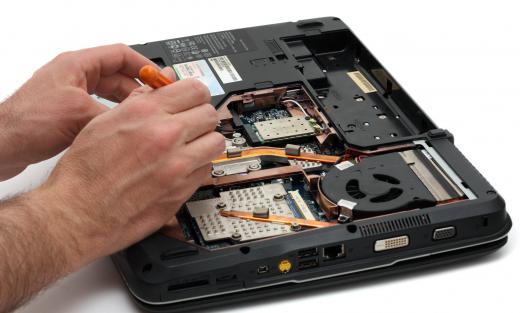Proactive maintenance is a practice in the manufacturing industry focusing primarily on determining the root causes of machine failure, and dealing with those issues before problems occur. This concept has extended into other professions and industries, where it might be applied to computer hardware and similar devices. Proactive practices are often seen as money-saving since they allow a company to avoid machine failure and solves issues before they become problems. In contrast to this practice, reactive and preventative maintenance often rely on solving problems that have already happened or on using routine repairs and service to try to avoid some issues.
The purpose of proactive maintenance is to view machine failure and similar problems as something that can be anticipated and dealt with before they occur. For example, through research it can be determined that a certain machine is most likely to fail due to contaminants in lubricating fluid. Once this is understood, then different proactive methods can be used to ensure the fluid is clean to begin with and remains clean throughout operation. If contaminants are detected within the lubricant, then it can be flushed out and replaced with clean fluid that helps prevent machine breakdown.

While this type of proactive maintenance may resemble preventative measures, there are some distinct differences between the two methods. Preventative maintenance typically relies upon established conditions for potential breakdown or machine failure, and the use of regularly scheduled maintenance in order to avoid this. In the previous example, preventative measures might be taken such as replacement of lubricating fluid once each year, regardless of the actual demands of the machine. Proactive maintenance procedures are more likely to take regular readings and evaluations of the lubricant to determine if replacement is needed sooner and to look for potential signs of problems developing.
This type of proactive maintenance is in stark contrast to reactive maintenance, which is the practice of repairing devices and hardware only after a problem has occurred. Once a machine begins leaking oil or demonstrates internal wear and tear due to shifts in alignment or other issues, reactive measures can be taken to fix these problems. This is often quite costly for a company, however, since the damage has already been done and repairing a problem might require much more work than preventing it in the first place. The proper use of proactive procedures also helps prevent loss of productivity due to broken or inoperable machines, which can also save a company a great deal of money.
